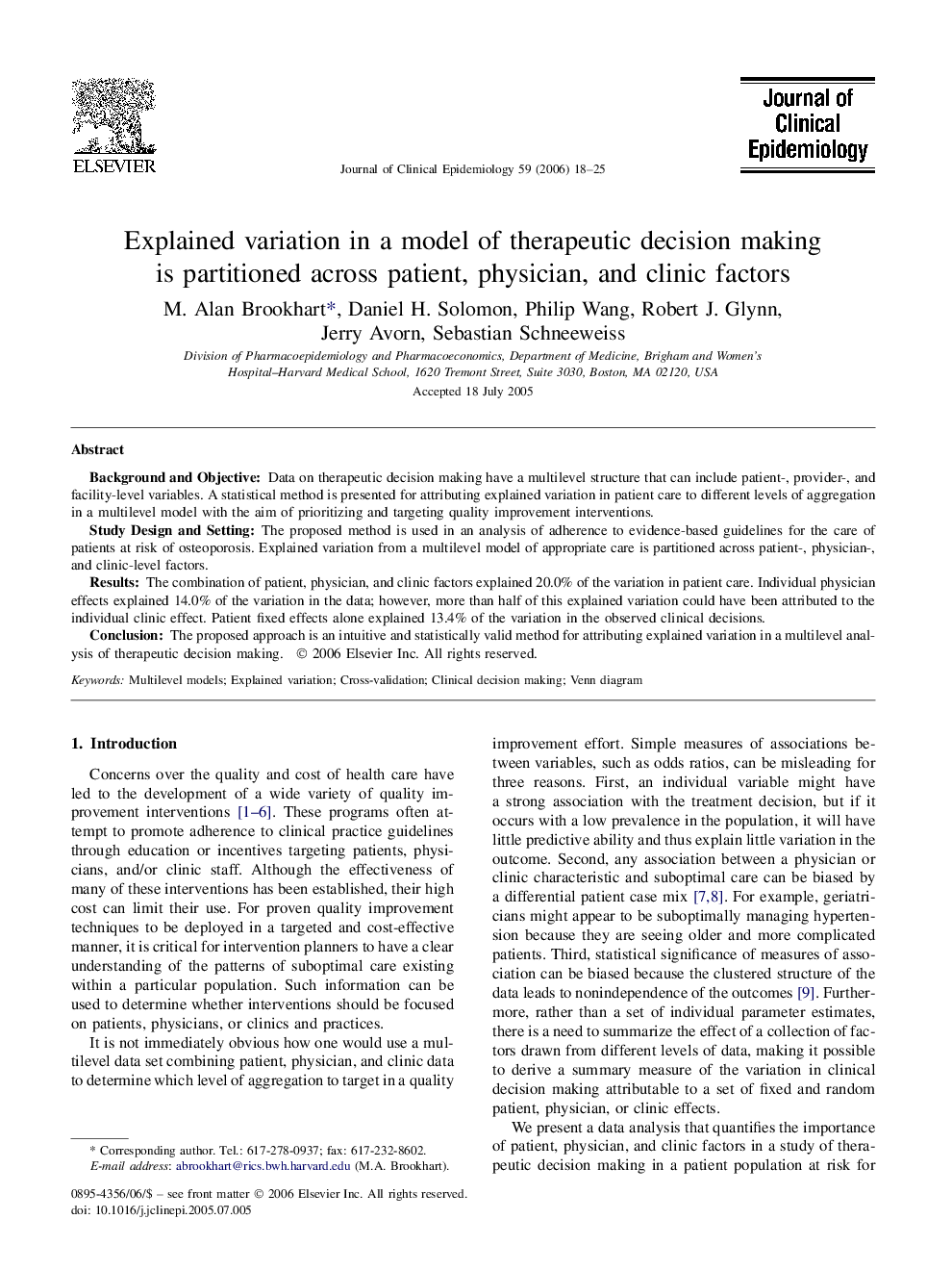| Article ID | Journal | Published Year | Pages | File Type |
|---|---|---|---|---|
| 1083761 | Journal of Clinical Epidemiology | 2006 | 8 Pages |
Background and ObjectiveData on therapeutic decision making have a multilevel structure that can include patient-, provider-, and facility-level variables. A statistical method is presented for attributing explained variation in patient care to different levels of aggregation in a multilevel model with the aim of prioritizing and targeting quality improvement interventions.Study Design and SettingThe proposed method is used in an analysis of adherence to evidence-based guidelines for the care of patients at risk of osteoporosis. Explained variation from a multilevel model of appropriate care is partitioned across patient-, physician-, and clinic-level factors.ResultsThe combination of patient, physician, and clinic factors explained 20.0% of the variation in patient care. Individual physician effects explained 14.0% of the variation in the data; however, more than half of this explained variation could have been attributed to the individual clinic effect. Patient fixed effects alone explained 13.4% of the variation in the observed clinical decisions.ConclusionThe proposed approach is an intuitive and statistically valid method for attributing explained variation in a multilevel analysis of therapeutic decision making.
